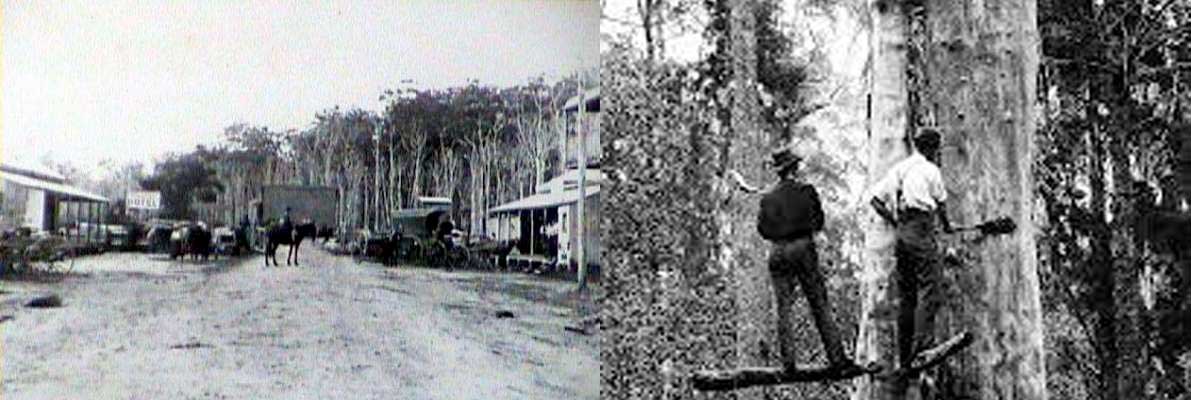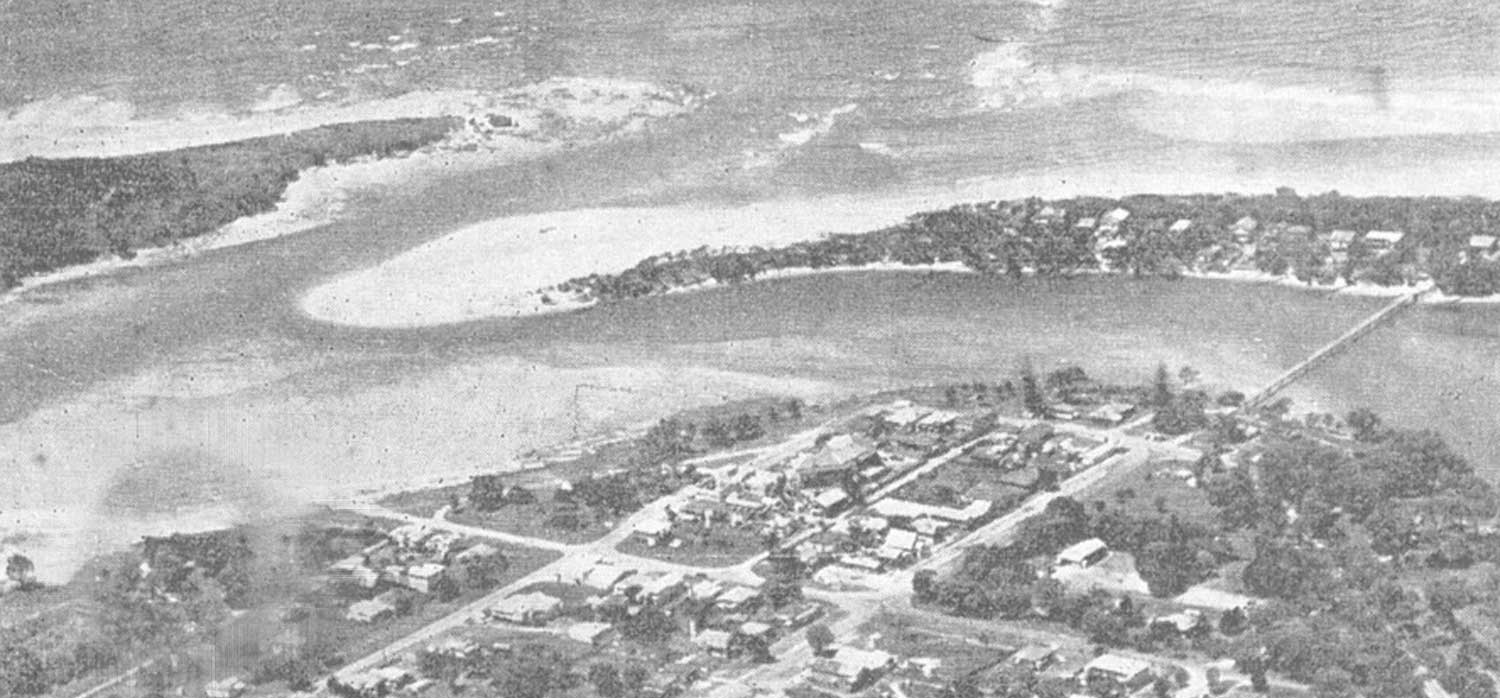Brunswick Heads History
The Brunswick Valley is situated on the Far North Coast of NSW, Australia. Being on the rim of the Wollumbin Caldera, the area has rich alluvial soil and lush rainforests. These natural features, along with an abundance of seafood and wildlife, enticed indigenous people to the valley on a regular basis for hundreds of years before Europeans settled here.
The first Europeans known to have become aware of this special place were explorers, escaped convicts, whalers and surveyors who passed by without causing much disturbance to the traditional lifestyle of the original inhabitants.

Arrival of the Cedar-getters
The first Europeans to settle in the area were Steve King (a former convict) and two brothers by the names of John and Edward Boyd. They set up camp and commenced logging for cedar along the banks of the Brunswick River in 1849. Cedar-getting was the first industry in the valley, but the original enterprise was short-lived. The party lead by Steve King withdrew soon after setting up the industry when a number of ships chartered to carry the timber to Sydney were wrecked on the dangerous river bar.
By the early 1860’s cedar-getters had returned to the valley and Brunswick Heads rapidly became an established sea port. Huge quantities of the best quality cedar were shipped from the Brunswick Valley. Large numbers of sail and steam powered vessels were engaged in carrying the valuable consignments of timber to the southern cities. Because the entire valley was a government forest reserve, there were still no permanent settlers here for many years.
During the 1860s, the cedar-getters moved further up the arms of the river in search of cedar. Base camps were established on the upper reaches of the river at Tyagarah Grass and Mullumbimby Grass. These naturally grassed clearings in the dense expanse of forest provided an oasis where the working bullocks, which were so important for hauling the logs to the water’s edge, could be fed. A camp site was established at the junction of the three arms of the Brunswick River. This grew to become a village and later the township of Mullumbimby. It was an excellent site because the river was tidal and could be easily navigated from the coast to this point.
Also, its central location gave access to all areas of the catchment. The natural landscape of this site also made it the most suitable position for bullock teams to cross the river with their wagons loaded with timber.

Boat-building and the Brunswick Heads Sea Port
At the time, the banks of the Brunswick River were lined with an abundance of timber species well suited to boat-building and repair. As such, a large boat-building industry developed at Brunswick Heads.
Early pioneers used Brunswick Heads as a port until the Byron Bay Jetty was opened in 1888. The Brunswick River remained an important link to other centres by providing quick access to the sea for small boats and schooners which transported supplies to and from neighbouring townships such as Mullumbimby, Burringbar, Murwillumbah, Byron Bay and Tweed Heads.
Major changes commenced in the Brunswick Valley in 1881 when land was released for permanent settlement. Settlers flooded into the fertile valleys to carve out farms from the sub-tropical jungle. Sugar cane and maize were amongst the earliest crops to be planted; but first the dense jungle and huge trees had to be cleared and burnt. Life was tough for the pioneers and their families. The price of success was many years of hard work, deprivation and isolation.
Sadly it was very difficult for the early farmers to get their hard-won produce to market, and some were forced to surrender their dream and walk away from their farms.

Brunswick Heads Village
Approximately 800 km north of Sydney, 40km south of the Queensland border, Brunswick Heads and the Brunswick Valley are perfectly positioned for a peaceful, relaxing holiday in a temperate, tropical climate.
The Brunswick River was named by Captain Rous in 1828 but it was not until later that the first recorded settlement of Brunswick Heads took place. Logging for cedar along the banks of the Brunswick River commenced in 1849. By the 1850’s Brunswick Heads had become an established sea port for transportation and a large boat-building industry soon developed.
The river remains the focus of the town, with the large old deco-style Hotel Brunswick taking in the view from across the road and lots of space for family picnics and play right on the river. A footbridge across the south arm of the river leads to the Flora and Nature Reserve, and is just one of the many fishing spots on both river and beach.
Holidaying in the Brunswick Valley provides excellent family entertainment in a pristine environment of coastal waterways and rainforests.
Brunswick Heads has a boat harbour (a great place for enjoying fish and chips or buying some seafood to cook at home) and beautiful surf beaches.
It is a quiet, peaceful tourist destination that caters well for the family unit. Christmas/New Year sees Brunswick Heads come alive with McGregor’s Carnival and Amusements, the combined Service Clubs providing nightly bingo, fireworks, the Woodchop Carnival and music from the Hotel Brunswick, all entertainment for locals and holiday makers alike.
Accommodation is available, with 3 caravan parks with river frontage, motels and units. Golf and bowls are available.
